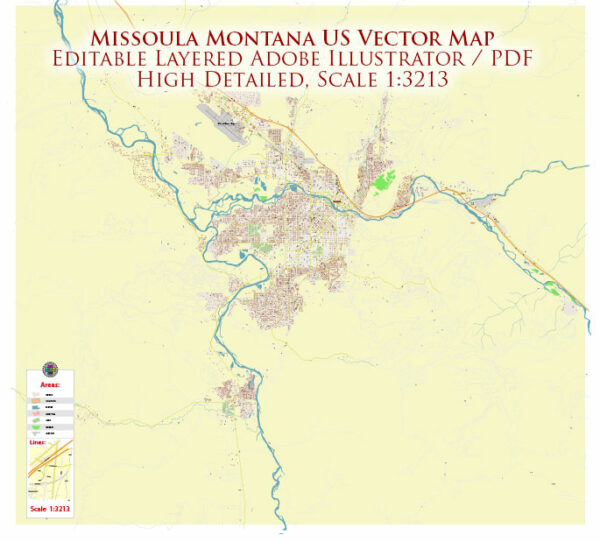Missoula, located in western Montana, has a rich history of urban development that reflects the broader trends and challenges faced by many American cities. Here’s a brief overview of Missoula’s urban development history:
- Early Settlement and Indigenous Presence (pre-1800s):
- Before European-American settlement, the Missoula Valley was inhabited by various Native American tribes, including the Salish, Pend d’Oreille, and Nez Perce.
- Lewis and Clark passed through the area in 1805, marking the first recorded European-American presence.
- Trapping and Trading (mid-1800s):
- In the mid-1800s, trappers and traders, including the well-known Ermatinger and DeSmet, began settling in the region.
- The construction of Fort Missoula in 1877 played a crucial role in the area’s development.
- Railroad and Economic Growth (late 1800s):
- The arrival of the Northern Pacific and the Oregon Short Line Railroads in the 1880s boosted Missoula’s economic development.
- The city became a major trading and transportation hub for western Montana.
- Lumber Industry and Growth (late 1800s – early 1900s):
- The lumber industry, attracted by the abundant forests surrounding Missoula, became a significant economic driver.
- The development of sawmills and related industries fueled population growth.
- University of Montana (1893):
- The establishment of the University of Montana in 1893 contributed to the cultural and educational growth of the city.
- Urban Expansion and Infrastructure (early to mid-1900s):
- The city expanded with the construction of infrastructure like bridges and roads.
- The 1930s and 1940s saw the development of residential neighborhoods.
- Post-World War II Era:
- After World War II, Missoula experienced growth, and suburbanization trends emerged.
- The city faced challenges related to urban sprawl and the need for increased infrastructure.
- Cultural and Economic Revitalization (late 20th century):
- The preservation of historic buildings and a focus on cultural amenities helped revitalize downtown in the latter half of the 20th century.
- The city began to diversify its economy, moving away from reliance on natural resource industries.
- Contemporary Urban Challenges (21st century):
- Like many cities, Missoula faces challenges such as affordable housing, traffic congestion, and sustainable development.
- Efforts are being made to balance growth with environmental conservation and social considerations.
Missoula’s history is intertwined with the broader narrative of the American West, marked by economic booms, urbanization, and the challenges of maintaining a balance between growth and preservation. The city continues to evolve, reflecting the changing dynamics of society and the natural environment.


 Author: Kirill Shrayber, Ph.D.
Author: Kirill Shrayber, Ph.D.